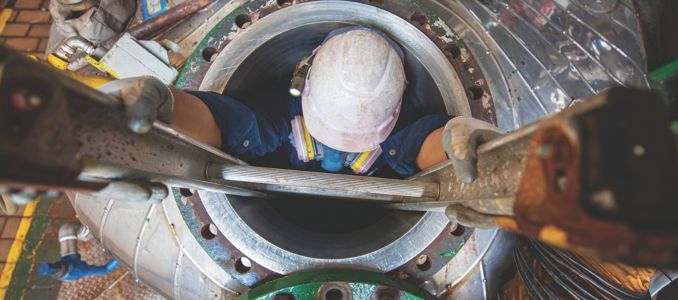I have never actually entered a confined space, and to be honest, I have never really wanted to. I have, however, been responsible for ensuring the safe and effective entry into literally hundreds of confined spaces. One thing is for certain: The safest entry is no entry at all!
THE industrial environment has changed substantially since OSHA first defined confined space entry (CSE) regulation in the late '70s, and gas detection regulation has not kept pace.
OXYGEN deficiencies, explosive atmospheres, and exposure to toxic gases and vapors injure or kill hundreds of workers every year during confined space entry procedures.
MANY articles in safety magazines address the subject of confined space rescue, so everyone should be familiar with 1910.146 (d)(9). It states that a company entering permit-required confined spaces must: "Develop and implement procedures for summoning rescue and emergency services, for rescuing entrants from permit spaces . . . ."
OSHA's 29 CFR 1910.146, "Permit Required Confined Spaces," contains the requirements for practices and procedures to protect employees in general industry from the hazards of entry into permit-required confined spaces.
THIS report has been produced by a confined space "expert" Consultant. Expert because he knows how to spell "compliance," has been in a bunch of spaces, sometimes carries a briefcase, and is not from your hometown! The client is you: the person responsible for entries into permit required confined spaces at your site
THIS accident happened in a large compartment of an Offshore Supply Vessel (OSV). Because of a lack of appropriate ventilation and a toxic atmosphere, it should have been treated as a confined space

Protect yourself and your employees from confined spaces hazards